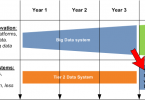
“The more successful your service desk, the happier and more productive your organization.”
Proclaimed in meetings, this type of positive mantra is met with nodding heads – but we all know that a lack of focus and a reluctance to provide a budget to support IT service desk capabilities are common barriers. This blog briefly examines why and offers service desk best practices to trigger change that delivers on the promise of a happy, productive service desk. This will ultimately make your organization more successful.
Are You Living in the Past?
The view of the service desk as merely the entry point into IT is dated and no longer useful. Consider how many touch points your service desk has in the organization and how those impact relationships. Given this, continuing to think of IT support by Level 1, 2, and 3 no longer suits today’s evolving business environment.
These designations were developed to define the levels of expertise in IT and core role function, but unfortunately ended up contributing to our current culture of skill snobbery. Instead of serving the original intent of describing the chain of support, levels became a way to describe an individual and his/her capability. This meant the skill set associated with Level 1 became limited to phrases like ‘log and flog.’ While service technicians did their IT studies, they ‘served time’ to gain enough skill to earn their place in Level 2, like DeskTop. Then, they could finally progress to being part of application development, networks, and other roles in Level 3.
Knowledge Heroes Control the IT Funnel
With this system, any skill gained is held close to the heart and locked inside a Level 1 person’s head; it is how the “knowledge hero” syndrome evolved and intensified. It fails to acknowledge how much control these employees actually hold. With salaries and status tied to becoming the sole owner of certain types of knowledge, other levels – and customers – have to work too hard to gain access to the knowledge they need to solve their problems and achieve their goals.
This behavioral structure, commonly called the “IT funnel,” hampers productivity throughout the organization by keeping knowledge too far away from the customer. The increasing disenchantment of customers who get sent into the IT funnel is well documented in satisfaction surveys and other research.
Here are some best practice strategies for IT service managers to change the cycle, empower their technicians, and improve customer satisfaction.
- Examine Your Customers’ Behavior and Expectations
Undeniably, the world of support has changed and continues to evolve rapidly – sometimes under C-Level radar. Today’s customers expect immediate access to services and answers, which requires increased capability in the service desk.
If you learn that people are bypassing your support processes and don’t want to talk with your service desk because “they don’t understand our issues,” etc., your capabilities need to be re-evaluated and improved. Not doing this will negatively impact your business and its bottom line.
- Understand Where Your Support Knowledge Lives
To truly understand the capability of your service desk, it’s important to look beyond the numbers in the monthly report. You need to assess where the seat of your support knowledge truly lives and figure out how far your customers have to travel to access it.
If Level 0 is the nomenclature for denoting “self-service,” and boosting customer productivity is the primary concern of the organization, then a natural extension is to view Level 1 as the next most important focus in capability in meeting this customer demand.
- Experience Your Support Center First-hand
A good strategy is to personally experience how your support center operates, thereby verifying your customers’ grassroots reality. Far more effective than setting up a tourist visit with your service desk manager is to take a seat in the middle of the operation. Your goal in doing this is to listen to the conversations that are happening, to hear for yourself the buzz of sound, and to watch people go ‘to and fro’ while they solve customer issues and fulfill service requests. Done this way, your evaluation will go beyond just the technology; no report will define as much as you can learn about their morale and relationship skills from doing this exercise.
This full-on service desk experience enables you to provide a truer context to the data within the reports you receive each month. You are therefore better equipped to make more positive and timely decisions in what’s required to move your service desk into a position of being a true strategic asset in providing IT Services to your organization.
- Unleash Your Knowledge Capability
The service desk is the voice and face of IT. It is the entry point to your organization, where your customers are expecting the person answering to be the expert, expeditor, and, consequently, their champion. Whether in the capacity of solving incidents, fulfilling requests, or providing a security gate, your service desk people implement the strategy and policy decisions made by C-Level in the provision of IT services.
First and foremost, don’t expect your service desk personnel to be anonymous and invisible – view them as professional communicators and problem solvers. They are knowledge workers. To redress the traditional view and build the reality of their role as relationship specialists in a way that provides depth to customer interactions, their knowledge must come out of the funnel and be allowed to stand proudly in front as a valued service.
There is plenty of proof supporting the concept of knowledge as the true product of the service desk. Focusing on building and unleashing the knowledge capability of your service desk increases your support success, improves your customers’ experience and therefore your organizational bottom line.
It’s well worth it to invest in improving the front end of your service desk in order to meet customers’ expectations of immediate, knowledgeable service with rapid response and accurate results.







